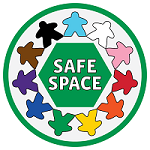What Is a d100 Die?
The d100 die, also known as the percentile die, is instantly recognizable due to its unique shape. It resembles a large, round ball—almost like a golf ball. Created by Lou Zocchi in 1985, this die has 100 sides. When you roll it, there’s no need for calculations or mix-and-matching; the number that comes up is the number you use.
When Should It Be Used?
The d100 die finds its niche in determining percentages within your TTRPG adventures. Here are some common scenarios:
- Spell Success: Imagine you’re a sorcerer attempting to cast a spell. The failure rate for the spell is 25%. Roll the d100: if you get a 15, your spell fails; if you roll an 80, it’s cast successfully.
- Save Rolls: When your character faces danger (say, avoiding a dragon’s breath), the d100 helps determine whether they succeed. The Dungeon Master (DM) might ask you to roll a d100 to see if you dodge the flames.
- Critical Hits and Fumbles: Some game systems use the d100 for critical hits or fumbles. Roll high for epic success or low for disastrous failure.
- Random Events: Need to decide the outcome of a random event? The d100 has your back. Whether it’s a mysterious encounter or a treasure chest’s contents, roll the die to find out.
How Do You Read It?
The d100 die’s ball-like shape and small panels can be tricky at first. Here’s how to handle it:
- Rolling Space: Since it’s larger than other dice, find a spacious area to roll it. A box or tray with raised edges works well.
- Deciphering the Panels: The smaller panels on the d100 can be confusing initially. With practice, you’ll get the hang of it. Remember, the number that appears is your result.
Alternatives to the d100 Die
While the d100 is iconic, some alternatives achieve similar results:
- d10 Percentile Rolls: Roll two ten-sided dice (d10s). One represents the tens digit, and the other represents the units digit. Combine them to get a number from 1 to 100.
- Digital Dice Apps: If physical dice aren’t your thing, digital dice apps often include a virtual d100.
Creating custom d100 tables for your TTRPG campaign can add depth, excitement, and unpredictability. Here are some steps to get you started:
- Conceptualize Your Table:
- Decide on the theme or purpose of your table. Is it for random encounters, treasure, NPC traits, or something else?
- Consider the tone of your campaign. Tables can be serious, whimsical, or even dark.
- Table Size:
- Determine how many entries your table will have. A d100 table typically has 100 options, but you can choose a smaller range if needed.
- Brainstorm Entries:
- Let your creativity flow! Think of interesting, flavorful, and diverse possibilities.
- For example, if you’re creating a “Mysterious Encounters” table, entries could include:
- “A spectral figure beckons you into the mist.”
- “You stumble upon an ancient, overgrown statue.”
- “A portal shimmers in the moonlight.”
- Assign Percentages:
- Each entry should have a percentage chance of occurring. Distribute percentages across your entries.
- Ensure they add up to 100%. You can adjust probabilities based on rarity or importance.
- Write Descriptive Text:
- Craft concise descriptions for each entry. Make them evocative and engaging.
- Use vivid language to immerse players in the moment.
- Organize the Table:
- Create a spreadsheet or document. List each entry alongside its assigned percentage.
- Sort entries by theme, location, or relevance.
- Test and Refine:
- Playtest your table during your campaign. See how it feels in action.
- Adjust percentages or tweak entries based on player feedback.
- Examples of Custom d100 Tables:
- If you need inspiration, consider existing d100 tables:

